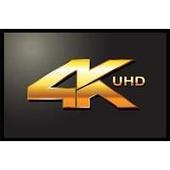 Your new post is loading...
 Your new post is loading...
A l’IBC en 2012 et 2013, la 4K était surtout présente dans l’amont de la chaîne de valeur, avec les caméras et systèmes de post-production de programmes de stocks. L’année dernière étaient apparus les premiers outils pour réaliser des programmes de flux (TV en direct) et avaient été menées les premières expériences de captation en live dont Roland Garros. Les premières expérimentations d’encodage et de diffusion satellite avaient démarré en 2012, mais sur des programmes de “stock”.
En 2014, c’était au tour d’un grand nombre d’acteurs côté réception et box de faire des démonstrations de solutions 4K. Roland Garros n’a plus seulement été capté en 4K mais également diffusé, et sur trois tuyaux (à titre expérimental) : en IP, en satellite et en TNT (DVB-T2 via la Tour Eiffel). Année paire oblige, la 4K a aussi été largement expérimentée aux JO de Sotchi ainsi que pendant la Coupe du Monde de Football au Brésil. Les professionnels fourbissent maintenant leurs armes pour être prêts pour la prochaine année paire, 2016 et notamment pour les Jeux Olympiques à Rio de Janeiro.
Les premiers projets 4K concrets commencent à voir le jour chez les opérateurs les plus innovateurs. Vodafone va ainsi lancer sa première offre de TV payante 4K début 2015 en Allemagne. Si les box à venir sur le marché français ne seront probablement pas encore 4K en 2014-2015 (chez Bouygues Telecom, Orange et Free), les générations suivantes sauteront sans doutes le pas. On attend toujours de voir qui sera le premier à dégainer ? Free ou Canal+ voire Orange ? C’est une question qui mêle : la capacité d’innovation, la volonté de différentiation des acteurs, le calendrier de livraison des chipsets 4K pour set-top-boxes et des considérations économiques évidentes. Les box prévues pour courant 2015 ont plus de chances d’être 4K que celles qui sont prévues pour 2014 voire début 2015.
HEVC/H.265 burst onto the scene in January 2013, when it was released for production by the two standards bodies that helped create it, the International Telecommunication Union (ITU) and Moving Picture Experts Group (MPEG). Now, about 18 months after its release, how usable is HEVC? Well, actually, not very. This article will look at HEVC’s status in three segments: delivery to computers and notebooks, to mobile, and to OTT, identifying the trends and value propositions affecting each market.
Adobe Systems has made some upgrades to its Primetime Digital Rights Management platform that the software vendor said will bring its content protection service into the world of browser-based video.
Adobe announced Primetime DRM is now available on apps without a Flash Player plugin, as well as via HTML5 on major Web browsers. The changes are significant as they represent Adobe's shift away from its Flash-player approach in favor of using emerging HTML5 extensions that support video embedded directly into Web pages.
The Internet was designed around text-based documents, and as such, has mature infrastructure to encourage and enable the search and discovery of text across the entire web. Video files, on the other hand, are not natively “searchable”, and usually require complex classification systems primarily powered by massive amounts of manually-tagged metadata. But what if there was a way to extract this kind of meaningful metadata automatically? Azure Media Indexer is a media processor that leverages natural language processing (NLP) technology from Microsoft Research to make media files and content searchable by exposing this meaningful metadata to the end-user automatically in the form of a keyword file (XML), a set of closed caption files (SAMI/TTML), and a powerful binary index file (AIB).
The company's technical prowess and free VP9 licensing haven't been enough to dent the fortunes of rival compression format HEVC. But Google's already moving on to VP10.
The Society of Motion Picture and Television Engineers (SMPTE) on September 10 is to release a technical standard covering High Dynamic Range (HDR) images that will – in essence – match the Dolby Vision proposals from Dolby Labs.
The concept could allow viewers to see what has been described as “dazzling” in its treatment of whiter whites and permitting much more variation in representing blacks/grays and items in shadow. One commentator, The Hollywood Reporter’s Carolyn Giardina, says early demonstrations have shown that the difference is a “more noticeable upgrade compared to moving from HDTV to Ultra-HD”.
The September 10 meeting at IBC will see SMPTE publish its ‘transfer function’ document which outlines a roadmap for the technology, starting at the camera’s lens and on to colour grading and post-production and eventual delivery to broadcasters and the home.
Thanks to a joint effort of GPAC Licensing, EBU and DASH-IF, the open-source multimedia framework GPAC now has support for the DASH Industry Forum DASH AVC/264 profile… and beyond! In this article we are going show you how to setup GPAC for your OnDemand and Live contents. In a next article, we’ll see how to use GPAC to encrypt your data with support with the most common DRMs.
Via DASH Industry Forum
One of the plugins that Microsoft released is Microsoft Smooth Streaming with OSMF Azure Plugin for Media MPEG-DASH support . We can extend the capabilities of OSMF (Open Source Media Framework for Adobe) adding Microsoft Smooth Streaming to players using this technology, as well as playback on Strobe Media Playback (SMP).
Via DASH Industry Forum
Could MPEG-DASH be the one online video format to replace all others? In a Streaming Forum 2014 panel on the much-hyped format heavyweights includingCisco, Akamai, the BBC, and Qualcomm offered a shared hope that the industry could standardize behind DASH. “To me, it’s the young Turk,” said Kevin Murray, system architect for Cisco, comparing DASH to HLS. Broadcasters are slowly centralizing on both options, he noted. DASH, however, lacks a maturity. The format still needs ubiquity (including the ability to play on iOS devices) and integration (DASH-IF needs to act as a gatekeeper). Keep it simple, Murray advised: A unified DASH is easier to deploy and test, and offers a better user experience. Throughout the discussion, panelists balanced the need for standardization with the need to offer versions with special features. The format needs a consistency of choice or problems will show up, Murray said. “The way people do live differs,” he said, and so do the ways players support live video. Advertising video needs certain features that content video doesn’t. The solution needs a consistent framework that supports various options.
Via DASH Industry Forum
We’re excited to announce an open source video player framework to make online video and video monetization with the IMA SDK easier than ever. The Google Media Framework (GMF) is available for iOS and Android, and we have a Video.js plugin for web based video players.
MF Features - Ready to use Video player for your apps and websites
- Demo apps include production ready integrations with the IMA ads SDK
- GMF is free and open source, so can be customized to meet your specific needs (Send us a pull request!)
- Easily customize the UI color and add or remove buttons
- Support for iOS 7+ and Android 4.1+
NGCodec was at the JCT-VC/MPEG Meeting in Sapporo to help the industry to continue with the development of the HEVC standard. This was a busy meeting where we did substantial work over 9 days. JCT-VC finished the work on the 2nd version of the HEVC text covering the enhancements related to scalability (SHVC), completed the work on HEVC Test Model (HM15) software and text, the version 1 conformance and accelerated the work in relation to the coding of screen content (SCC). They were a number of additional MPEG activities that were conducted outside JCT-VC, mostly in relation to High Dynamic Range video (HDR) and royalty free codecs.
Disney Researchers have come up with a way to auto-edit together footage from multiple social cameras. The team created an algorithm that takes in multiple video feeds and outputs a “single video of user-specified length that cuts between the multiple feeds automatically,” according to their research paper.
Researchers Ido Arev, Hyun Soo Park, Yaser Sheikh, Jessica Hodgins and Ariel Shamir, said their algorithm uses “existing cinematic rules.”
By determining the center of attention of the cameras and, by default, their operators, the algorithm indicates where the cuts should go. The center of attention is key. It is derived from the orientation of each person involved in a group activity and the footage they capture. The aggregate of the resulting viewing angles is referred to as the “gaze concurrence” or “3D joint attention,” which produces a metric for the “spatial and temporal location of the important ‘content’ of the activity.”
A couple of times a year Brightcove has an internal hackweek where engineers work on any project they’d like. In the latest hackweek (2014-07-14) Tom Johnson decided to see if he could get DASH supported in as many places as possible, by combining a few of the existing DASH player implementations with Video.js. MPEG-DASH (Dynamic Adaptive Streaming over HTTP) is a streaming format similar to Apple’sHTTP Live Streaming (HLS). It allows you to provide multiple versions of a video at different bitrates, and then the player can switch between those versions depending on the user’s bandwidth (which is more complicated than you might think). The two DASH playback implementations used were Dash.js and Dash.as. They were combined using video.js’s playback tech architecture, which means you can include plugins and custom skins and they’ll work the same with either playback method. See the results.
Via DASH Industry Forum
|
Comme de coutume chaque mi-septembre depuis 2010, direction Amsterdam pour l’IBC, le plus grand salon de la télévision numérique avec le NAB de Las Vegas qui a lieu en avril. On y trouve de tout, des outils de captation, de production, de diffusion et de réception. Avec plus de 1700 exposants, on y découvre la floraison de sociétés qui se disputent un marché en perpétuel renouvèlement. Ce salon a lieu juste après l’IFA de Berlin qui est destiné aux produits grand public et auquel je ne me rends pas, réservant ce domaine au CES de Las Vegas en janvier.
Sans grande surprise, les mots clés de ce salon étaient : OTT multi-écrans s’appuyant sur des architectures en cloud et l’adoption massive de la 4K/Ultra HD par les industriels du broadcast.
Internet Explorer on Windows Phone 8.1 adds new media features that greatly expand its support for HTML5 audio and video. Audio and video elements are now fully supported, including inline playback of video content, and adaptive streaming based on the latest Web specifications is supported as well. These new features provide Web site developers the tools they need to provide compelling media experiences, and make IE an ideal browser for mobile media applications.
Now Internet Explorer on Windows Phone 8.1 supports Media Source Extensions as well. With it, sites will be able to deliver adaptive streaming videos using the same MPEG-DASH framework to Windows Phone 8.1 devices.
The Windows Phone 8, Windows 8.1 and Windows Phone 8.1 Applications for Step 3 support the following formats:
- Windows: WMV, MP4, MPEG2-TS, Smooth Streaming and MPEG DASH
- Windows Phone : WMV, MP4, Smooth Streaming and MPEG DASH
What the online video industry needs is simple standards for reaching all viewers. But when have standards ever simplified online video?
Proprietary technologies are inherently bad in the video space, except when they’re not. Standards inevitably simplify matters, except when they don’t. So it is with Flash, and its obvious successors, the Media Source Extensions (MSE), Encrypted Media Extensions (EME), and Dynamic Adaptive Streaming via HTTP (DASH).
MSE/EME/DASH are the standards that will enable web publishers to replace Flash in their playback architectures. MSE eliminates two of HTML5's most critical limitations by bringing standards-based adaptive streaming and live delivery to HTML5 browsers and devices. EME brings a single encryption API to HTML5 browsers, providing digital rights management (DRM), addressing another former deficit. DASH is the standards-based file format that will actually deliver the streams. The vision is one set of cache-friendly streams in DASH format that can play on any MSE/EME-compatible computer or device, which will replace the two streams most producers create today for Flash and HLS playback.
Even though users will be able to let NPAPI plug-ins run by default in January, we encourage developers to migrate of off NPAPI as soon as possible. Support for NPAPI will be completely removed from Chrome in a future release, probably by the end of 2014.
The ability to adapt media streaming to an individual consumer is critical in delivering high-quality content to a large audience. In the past this capability has been provided by technologies such as Silverlight’s smooth streaming and Quicktime’s HTTP live streaming. The Media Source Extensions to the HTML media element provide the capability to adapt a stream to an individual consumer on the modern web. Html5rocks has put together a great example of how to use the Media Source Extensions to implement some of these common use cases.
For those of us working to develop MPEG-DASH, Apple’s recent support of the W3C’s Media Source Extensions (MSE) API in Safari on OS X Yosemite is great news. MSE and DASH have a complementary relationship, and expanded support for MSE will make it much easier for publishers to adopt DASH.
While MSE itself is designed to be media container format neutral, one of the primary container format recommendations made in the specification is compatible with the ISO Base Media File Format (ISO BMFF)“fragmented MP4” profile of MPEG-DASH. At this time, MSE implementations in most desktop browsers (Chrome, IE, Safari) are available and support the ISO BMFF container. Firefox is also working on compatible implementations, which are already partially available in their development branches.
How can publishers ensure that their viewers are getting a TV-like experience with MPEG-DASH video? At the recent Streaming Forum conference in London, experts from Qualcomm and Bitmovin explained the finer points of QoE for DASH. "How can the DASH standard or standardized formats have to increase the quality, once there is some kind of metrics or logging functionality at the client that gives you means to communicate to another instance -- a logging server or whatever -- what's going on in the client side?" asked Christian Timmerer, CIO for Bitmovin. "In DASH there is an Annex D which is a normative definition of semantics for these metrics according to different observation points. If you have the DASH access client -- that basically is the one that issues the HTTP request -- and gets the responses and hands that over to what we call here a DASH-enabled application, which then in the end feeds into a display for rendering purposes or whatever."
Via DASH Industry Forum
Released in April 2012, MPEG DASH is the fastest tracked ISO standard ever released by the MPEG organization. A standard for the delivery of adaptive, segmented media, MPEG DASH seeks to be the unifying and enabling force for the OTT world as NTSC and PAL were for the broadcast world. The goals of this SuperSession are to expose attendees to the latest advances in DASH and to educate them on the deployments and usage taking place today.
Dr. Iraj Sodagar, President of the DASH Industry Forum and Chair of MPEG’s DASH subgroup will open with a summary of the State of Affairs of DASH - providing an update on the current state of DASH standardization in MPEG, including the features of MPEG-DASH 2nd edition as well as an overview of the DASH-IF latest activities and the status of DASH adoption by various consortia. Richard Leider from Google will present a talk on the large-scale use of DASH at YouTube, the world’s largest media property. Dr. Illgner, Director of the IRT and Chairman of the HbbTV Association will follow with a presentation on DASH and HbbTV. David Price, VP Business Development at Ericsson will moderate a panel on Deployments of DASH in HbbTV and LTE Broadcast. Dr. Thomas Stockhammer, editor of the DASH standard, will present an update on the DASH-AVC/264 interoperability guidelines as well as technologies under consideration for forth-coming updates to DASH. We’ll conclude with presentations of commercial deployments from Akamai, DTS, InsideSecure, Microsoft and Qualcomm.
Via DASH Industry Forum
Low latency with HTTP-streaming (segment-based) technologies is a challenge. In particular MPEG-DASH is gaining adoption among international industry consortiums such as DVB with DVB DASH or ETSI with HbbTV 2.0 (not published yet), with a growing focus on live use-cases. For such applications, latency is a concern. In this article, we will show you how the GPAC team studied the impact on the overhead of HD streaming with very low latency using MPEG-DASH and demonstrated that overhead on the transport side is negligible, in the order of 1%. At 1% overhead, we could demonstrate a 240ms latency. With such a low latency, interactive or bidirectional applications such as video conferencing or live streaming with voting become possible. Of course such low latency can only be safely reproduced in local network conditions. Yet it shows that the latency is not due to the MPEG-DASH technology but rather to the network conditions. It also shows that a few technical choices can dramatically reduce the latency. All the tools used for this demonstration are available as free software.
Via DASH Industry Forum
The industry might be buzzing about 4K video, but is this something consumers actually want? At the recent Streaming Media East conference in New York City, Will Law, chief architect, media division, at Akamai, reminded the audience that this discussion sounds awfully familiar.
"I'm a pragmatic optimist about 4K, and I'm also a student of history," Law began. "I wanted almost to print out a session we had at Streaming Media East about six years ago that was taking about the new format coming out -- how it was larger, there were no screens to display it, there were no devices to play it, content wasn't produced in it. And that format was 1080p. Six years ago we were having exactly the same discussion, and I think we're going to repeat it again. In six years time we're going to be looking back and we will see a transition from 720 to 1080 to 4K."
It wasn't long ago that 3D enjoyed the same level of hype. Yet, it still didn't catch on.
DivX announced the release of the MainConcept® HEVC SDK 3.0. The newest release of the industry leading HEVC encoding tool includes support for real-time encoding of 1080p video at 30 frames per second.
Additionally, the release includes enhancements to the decoders available for PC and ARM, which adds weighted prediction, PCM decoding and Transquant Bypass to support playback on content from other party codec vendors.
The MainConcept HEVC SDK continues to make strides on encoding quality and performance, based on numerous in-house tests, currently realizing 35-48 percent bitrate improvements over H.264 (MainConcept H.264 v9.8 encoder) in internal company benchmark tests. What’s more, the included and patent-pending SABET™ (Smart Adaptive Bitrate Encoding Technology) achieved more than a 30 percent performance gain with transcoding adaptive formats such as DivX® HEVC adaptive streaming. This means companies interested in maximizing the efficiency of their applications, services and environments may reduce total encoding time for an adaptive stream by more than 30 percent by using SABET.
How is DASH different from competing video standards. It's open, and for broadcasters that's a big factor. At the recent Streaming Media East conference, Jeff Tapper, chief architect at Digital Primates, taught attendees how to build a DASH player, and also why DASH stands apart. "The real key differentiator of DASH, as opposed to any of the other HTTP streaming formats, is it's an open standard. HLS, HDS, Smooth Streaming: They're all owned by one company," Tapper said. "Some of them have becomede facto standards on their own, but the more I work with broadcasters and people who are used to open standards like AM and FM and UHF and VHF -- these are standards that everybody agrees on. The broadcasting world loves standards."
Via DASH Industry Forum
|



 Your new post is loading...
Your new post is loading...



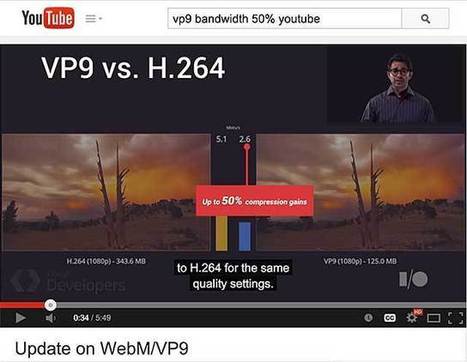



![[IBC2014] DASH AVC/264 support in GPAC - GPAC Licensing | Video Breakthroughs | Scoop.it](https://img.scoop.it/Mmm3vFopvF0JWrs3mynSsTl72eJkfbmt4t8yenImKBVvK0kTmF0xjctABnaLJIm9)






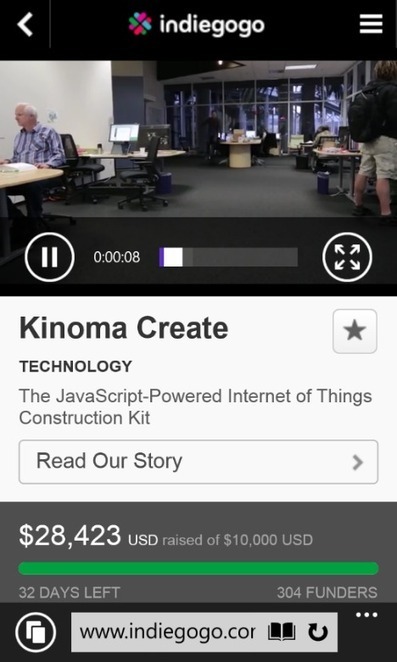
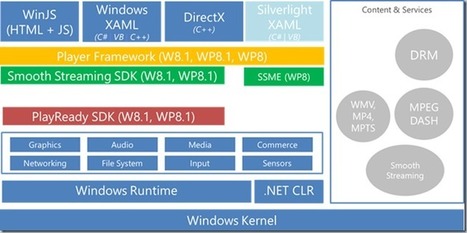

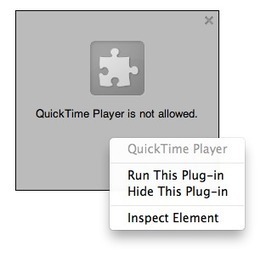


![[IBC2014] MPEG-DASH SuperSession | Video Breakthroughs | Scoop.it](https://img.scoop.it/VgAd3YC4DfQAJrCLULNhmTl72eJkfbmt4t8yenImKBVvK0kTmF0xjctABnaLJIm9)
